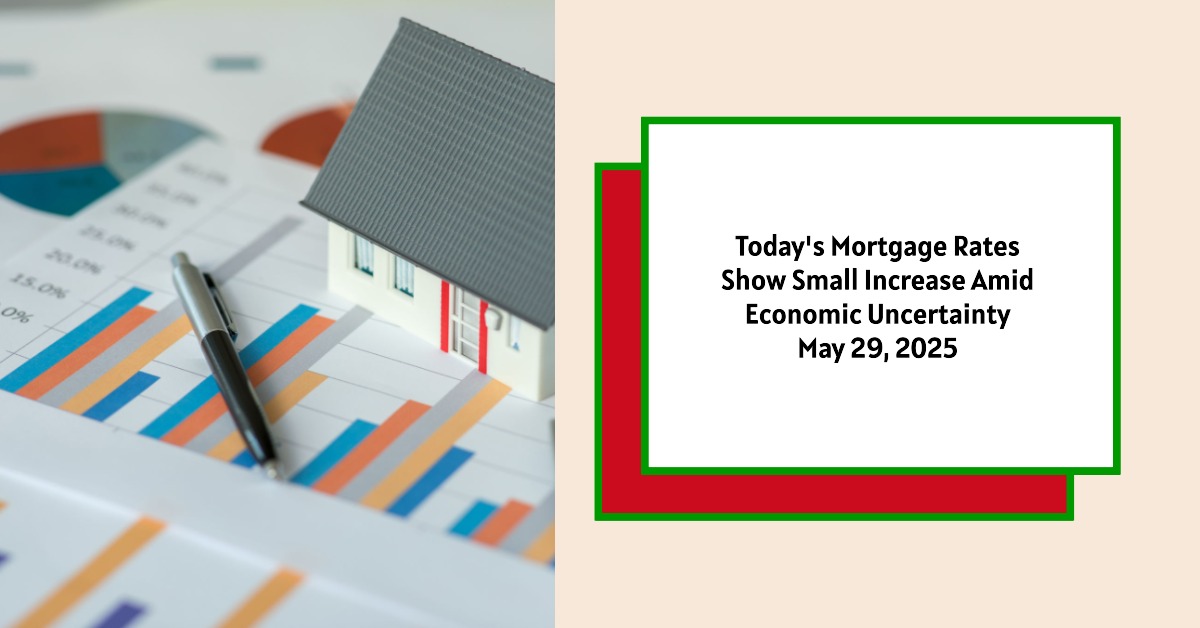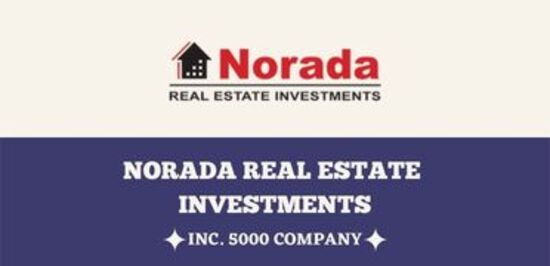As of May 29, 2025, today's mortgage rates have seen a small increase from previous levels, reflecting a rise due to ongoing economic uncertainties surrounding tariffs and government fiscal policies. The average rates on key mortgage products have increased slightly, making it imperative for potential homebuyers and those considering refinancing to stay informed about these changes, as they may impact monthly payments and overall budget constraints.
Today's Mortgage Rates – May 29, 2025: Slight Increase Amid Economic Uncertainty
Key Takeaways:
- Current Trends: Mortgage rates are up slightly, with a 30-year fixed mortgage at 6.88%.
- Factors Impacting Rates: Economic uncertainty due to tariffs and discussions of a government tax bill are influencing rates.
- Refinance Rates: Current refinance rates are echoing purchase rates, with the 30-year refinance rate at 6.88%.
- Future Predictions: While rates have risen this month, ongoing economic developments will play a critical role in determining the direction of rates moving forward.
Today's mortgage landscape is shaped significantly by various economic factors. As reported from multiple financial sources, today's average 30-year fixed mortgage rate resides at 6.88%, a modest increase from previous assessments. Similarly, 15-year fixed rates are up to 6.07%, which indicates a rising trend in borrowing costs. Investors are on high alert, keenly observing how proposed tariffs and the unfolding story of the GOP tax bill will affect the economy, thereby influencing mortgage rates.
Understanding Today's Mortgage Rates
Mortgage rates are integral to the buying process in the housing market and are influenced by several factors that create a competitive environment for both lenders and borrowers. Here are the current rates from Zillow observed in various mortgage categories:
| Loan Type | Average Rate (%) |
|---|---|
| 30-Year Fixed | 6.88 |
| 20-Year Fixed | 6.46 |
| 15-Year Fixed | 6.07 |
| 5/1 Adjustable-Rate Mortgage | 7.09 |
| 7/1 Adjustable-Rate Mortgage | 6.69 |
| 30-Year VA | 6.41 |
| 15-Year VA | 5.90 |
| 5/1 VA | 6.39 |
Refinance rates mirror those for purchases closely. Here’s how they stack up:
| Refinance Type | Average Rate (%) |
|---|---|
| 30-Year Fixed | 6.88 |
| 20-Year Fixed | 6.71 |
| 15-Year Fixed | 6.13 |
| 5/1 Adjustable-Rate Mortgage | 7.33 |
| 7/1 Adjustable-Rate Mortgage | 6.95 |
| 30-Year VA | 6.42 |
| 15-Year VA | 5.94 |
| 5/1 VA | 6.13 |
These figures represent national averages rounded to the nearest hundredth, and the actual rates may vary based on specific circumstances like credit score and loan amount.
Factors Influencing Mortgage Rates
Economic Indicators
Challenging economic conditions often drive fluctuations in mortgage rates. The recent uptick in rates is largely attributed to investor concerns surrounding new tariffs and the potential for a U.S. credit downgrade. As inflationary pressures mount, lenders typically respond by increasing mortgage rates. Reports indicate a notable connection between bond yields and mortgage rates; when bond yields rise, as they have in recent weeks, mortgage rates tend to follow suit. This cycle has left many borrowers wondering how long current economic circumstances will linger, influencing borrowing behaviors significantly.
Additionally, broader economic indicators such as employment rates, inflation indices, and consumer confidence all contribute to how lenders price their rates. When the economy is perceived to be flourishing, lending becomes more competitive, potentially driving rates higher to cool consumer spending.
Government Policy Changes
Changes anticipated in U.S. fiscal policy, specifically centered around the GOP tax bill, are noteworthy contributors to the current trend. This proposed legislation is projected to add significantly to the national deficit, raising flags among investors about inflationary impacts. Should these policies push inflation upward, the housing market could experience even higher rates. Discussions and potential amendments to the bill could shift market reactions swiftly, leading to fluctuations in both mortgage and refinance rates.
How Mortgage and Refinance Rates Work
At their essence, mortgage rates act as fees charged for borrowing money from lenders, presented as an annual percentage rate (APR). Two primary categories of mortgage rates exist: fixed-rate and adjustable-rate mortgages.
- Fixed-rate mortgages lock in a specific interest rate for the life of the loan. Borrowers appreciate this feature as it allows for predictable monthly payments over the term of the loan. For instance, securing a 30-year mortgage at a fixed rate of 6% means that a homeowner will consistently pay that rate for three decades, an appealing aspect for many buyers.
- Adjustable-rate mortgages (ARMs) start with a low fixed rate for an initial period, which may adapt based on the market afterward. For example, someone who chooses a 5/1 ARM enjoys a fixed rate for the first five years but will then face potential adjustments each year for the remaining 25 years. This type of mortgage can be advantageous when rates are low, but it carries risks as the rate could increase significantly later, thereby considerably impacting monthly payments.
Monthly Payments Breakdown
In mortgage repayment structures, a substantial portion of initial monthly payments is allocated towards interest. Over time, more of this payment switches to the mortgage principal, reducing the overall debt owed. This transition emphasizes the importance of the mortgage term, affecting how quickly homeowners can build equity in their properties.
The implications of interest accumulation can profoundly impact a buyer's overall mortgage costs, making the selection of loan types and interest rates critical for long-term financial health.
30-Year vs. 15-Year Mortgages
A common consideration for many borrowers involves choosing between the 30-year and 15-year fixed-rate mortgages. These options present two contrasting approaches to home financing:
- 30-Year Mortgages: This option appeals to many due to lower monthly payments, affording borrowers the flexibility to invest the difference elsewhere. However, this benefit comes with the trade-off of paying higher interest rates over time and thus accruing significantly more total interest across the entire mortgage period.
- 15-Year Mortgages: By shortening the loan term, borrowers can secure lower interest rates and clear their debt faster, leading to reduced total interest payments. Conversely, the monthly payment burden is more substantial, which can strain budgets during the loan term.
Ultimately, the decision hinges on the balance of monthly affordability against total financial obligations over time. Each path has unique implications for potential homebuyers.
Current Trends in Borrowing and Refinancing
In today’s market, refinancing opportunities remain influenced by broader economic fluctuations. The current refinance rates being closely aligned with purchase rates are altering the dynamics for many homeowners contemplating the switch. Although there is still a motivation for some clients looking to lower their monthly payments, the proximity of refinance rates to purchase rates may diminish the appeal for many. Those seeking to capitalize on historic low rates from previous years now face a more complicated landscape.
Moreover, industry experts express concern about a potential “rate lock-in” effect among homeowners. Many lenders are currently experiencing heightened demand as sellers hesitant to let go of low-rate mortgages may remain on the sidelines, adding to inventory challenges as they wait for rates to decline again. This phenomenon highlights the tightrope walk for buyers in the market, where accessing inventory while contending with high rates becomes increasingly difficult.
Read More:
Mortgage Rates Trends as of May 28, 2025
Dave Ramsey Predicts Mortgage Rates Will Probably Drop Soon in 2025
Current Market Environment and Future Predictions
Moving forward, financial analysts predict the possibility of fluctuating rates over the coming months. The Fannie Mae forecast indicates an expectation for mortgage rates to stabilize around 6.1% by the end of 2025, reflecting tentative optimism as market forces begin to balance out. However, any shifts in government fiscal policy, global economic conditions, and domestic indicators will profoundly affect how lenders adjust their rates. In such a climate, market prediction quickly becomes speculative territory; thus, borrowers must remain vigilant and informed.
Frequently Asked Questions
What Bank is Offering the Lowest Mortgage Rates?
As of the latest data, banks such as Bank of America and Citibank have been recognized for their competitive mortgage offerings. However, to maximize your chances of obtaining a favorable rate, it's advisable to compare multiple lenders—including credit unions and specialized mortgage companies—to identify the best deal.
Is 2.75% a Good Mortgage Rate?
Historically, a 2.75% mortgage rate represents an attractive option. Given current rates that are significantly higher, securing such a low rate is quite improbable unless one assumes a mortgage from a seller who previously locked in such a rate during the low rate environment of 2020–2021.
What is the Lowest-Ever Mortgage Rate?
The 30-year fixed mortgage reached an astounding low of 2.65% in January 2021, according to Freddie Mac. With current rates significantly elevated, it's challenging to foresee a return to those historical lows in the near term.
When Should You Refinance Your Mortgage?
Experts commonly suggest refinancing when new rates are at least 1% to 2% lower than your existing mortgage rate. Personal financial goals and the associated costs of refinancing can also dictate the appropriateness of making such a move.
Summary:
As we approach the midpoint of 2025, understanding current mortgage rates—which have seen a minor uptick—is vital for anyone considering homeownership or refinancing. Staying informed about the elements that influence these rates can significantly affect financial outcomes, enabling buyers and homeowners to navigate today's housing market more effectively.
Invest Smarter in a High-Rate Environment
With mortgage rates remaining elevated this year, it's more important than ever to focus on cash-flowing investment properties in strong rental markets.
Norada helps investors like you identify turnkey real estate deals that deliver predictable returns—even when borrowing costs are high.
HOT NEW LISTINGS JUST ADDED!
Connect with a Norada investment counselor today (No Obligation):
(800) 611-3060
Also Read:
- Will Mortgage Rates Go Down in 2025: Morgan Stanley's Forecast
- Expect High Mortgage Rates Until 2026: Fannie Mae's 2-Year Forecast
- Mortgage Rate Predictions 2025 from 4 Leading Housing Experts
- Mortgage Rates Forecast for the Next 3 Years: 2025 to 2027
- 30-Year Mortgage Rate Forecast for the Next 5 Years
- 15-Year Mortgage Rate Forecast for the Next 5 Years
- Why Are Mortgage Rates Going Up in 2025: Will Rates Drop?
- Why Are Mortgage Rates So High and Predictions for 2025
- Will Mortgage Rates Ever Be 3% Again in the Future?
- Mortgage Rates Predictions for Next 2 Years
- Mortgage Rate Predictions for Next 5 Years
- Mortgage Rate Predictions: Why 2% and 3% Rates are Out of Reach
- How Lower Mortgage Rates Can Save You Thousands?
- How to Get a Low Mortgage Interest Rate?
- Will Mortgage Rates Ever Be 4% Again?



